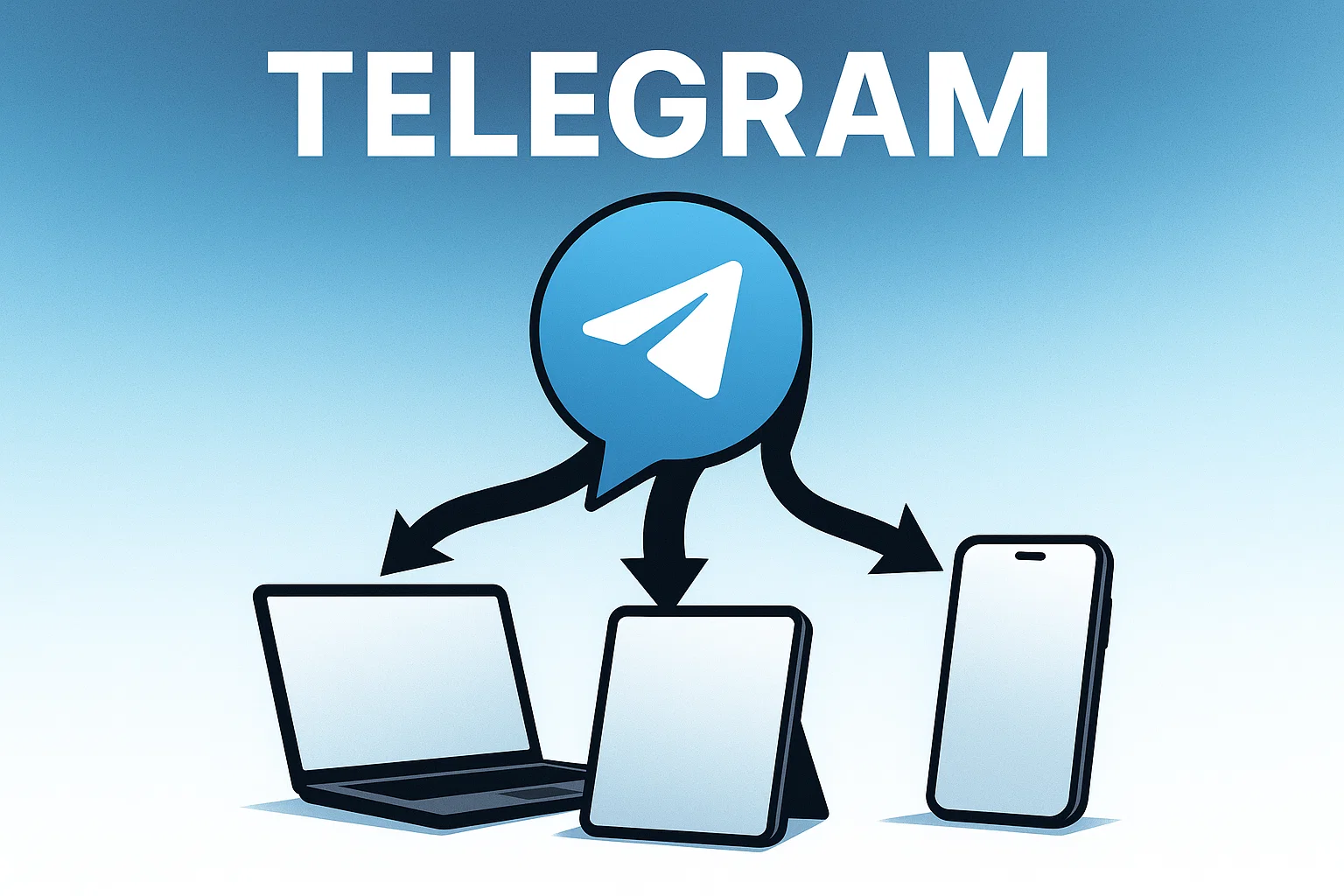Telegram Message Forwarder: Automate Chat Updates with Webhooks and Polling
Telegram message forwarder routes chat updates automatically to groups, channels, or external systems, cutting manual forwarding and missed alerts. This guide gives clear webhook and polling examples, filtering patterns, and security tips so you can deploy a reliable forwarder quickly, scale it with queues, and keep logs for auditing.
Introduction
Telegram message forwarder is a practical automation for developers and teams who need reliable routing of notifications and chats. This article is informational and actionable, and it shows how to build a forwarder using webhooks or polling, plus how to secure and scale it. You will see examples in Python and Node.js, and tools like ngrok and Redis are mentioned early because they speed testing and reliability.
I will walk you through why a forwarder matters, a working webhook example, polling fallback, best tools, and a compliance checklist you can copy and adapt. In my experience, adding a simple telegram message forwarder early saves hours for support and ops teams.
What is a Telegram Message Forwarder?
A telegram message forwarder automatically takes messages from a source chat, bot, or channel, then forwards them to other chats, channels, groups, or external webhooks. It can filter, transform, and enrich text, and post with context to a target. The core pieces are a bot token, an endpoint, and forwarding logic.
How It Works
- Webhook mode, where Telegram posts updates to your HTTPS endpoint.
- Polling mode, where your script asks Telegram periodically, useful for simple setups.
Messages are matched by rules, then sent using the Bot API, see the Telegram Bot API documentation, and may integrate with databases, queues, or logging services.
Why It Matters
A forwarder reduces manual steps, centralizes alerts, and connects monitoring tools to your team chat. It is especially helpful for incident response, customer messages, and cross-team notifications.
Modes and Triggers
Listening modes, webhook and polling, change performance and reliability. Trigger types include keyword matches, sender ids, chat ids, and regex patterns. You can also enrich messages with metadata like timestamps or source tags.
Build a Webhook Forwarder, Step-by-Step
Overview
This section shows a minimal webhook forwarder in Python, followed by a polling Node.js alternative. Use the Python webhook for production, and polling for quick prototypes.
Requirements
- A Bot token
- An HTTPS endpoint
- A target chat id
- A simple server or hosting
- Optional Redis for queuing
Python Webhook Example
python
# python - simple webhook forwarder
from flask import Flask, request, jsonify
import requests
import os
# set BOT_TOKEN and TARGET_CHAT_ID in environment
BOT_TOKEN = os.getenv("BOT_TOKEN")
TARGET_CHAT_ID = os.getenv("TARGET_CHAT_ID")
API_URL = f"https://api.telegram.org/bot{BOT_TOKEN}/sendMessage"
app = Flask(__name__)
@app.route("/webhook", methods=["POST"])
def webhook():
data = request.get_json(force=True)
message = data.get("message") or data.get("edited_message")
if not message:
return jsonify({"status":"ignored"}), 200
text = message.get("text","")
# forward when a condition matches
if "ALERT" in text.upper():
payload = {"chat_id": TARGET_CHAT_ID, "text": f"Forwarded: {text}"}
try:
resp = requests.post(API_URL, json=payload, timeout=5)
resp.raise_for_status()
except Exception as e:
return jsonify({"status":"error","error":str(e)}), 500
return jsonify({"status":"ok"}), 200
if __name__ == "__main__":
app.run()
Explanation
This webhook receives updates and forwards matches. For production, validate requests, add retries, and persist message ids to avoid duplicates.
Node.js Polling Example
javascript
// nodejs - simple polling forwarder
const fetch = require("node-fetch");
const TOKEN = process.env.BOT_TOKEN;
const TARGET = process.env.TARGET_CHAT_ID;
let offset = 0;
async function poll() {
try {
const res = await fetch(`https://api.telegram.org/bot${TOKEN}/getUpdates?offset=${offset}&timeout=20`);
const data = await res.json();
if (data.result && data.result.length) {
for (const u of data.result) {
offset = u.update_id + 1;
const m = u.message || u.edited_message;
if (!m) continue;
const text = m.text || "";
if (text.toUpperCase().includes("ALERT")) {
await fetch(`https://api.telegram.org/bot${TOKEN}/sendMessage`, {
method: "POST",
headers: {"Content-Type":"application/json"},
body: JSON.stringify({chat_id: TARGET, text: "Forwarded: " + text})
});
}
}
}
} catch (err) {
console.error("error", err);
} finally {
setTimeout(poll, 1000);
}
}
poll();
Explanation
Polling is simple to run anywhere, but webhooks are preferred for reliability and lower latency when building a telegram message forwarder.
Best Practices, Recommended Tools, Pros and Cons
Design Recommendations
Use webhooks for production, keep rules explicit, throttle outgoing sends, and log all forwarded messages. Validate incoming updates to ensure they come from Telegram, and store processed message ids to prevent duplicates.
Recommended Tools
- ngrok, quick HTTPS tunnel
- Pros: local testing is seamless
- Cons: not meant for production
- Tip: run ngrok http 5000 to expose your local webhook
- DigitalOcean App Platform, easy deploy
- Pros: built-in HTTPS and scaling
- Cons: paid tiers for production
- Tip: deploy using git or containers
- Redis, for queues and dedupe
- Pros: lightweight job queue and dedupe
- Cons: extra infrastructure to manage
- Tip: use Redis lists for task queues and workers
Pros and Cons
Pros:
- Automation reduces manual forwarding
- Centralizes alerts
- Improves response time
Cons:
- You must manage rate limits, security, and data handling
- Monitor the forwarder
Filtering Strategies and Scaling
When you build a telegram message forwarder you will need clear filtering strategies to avoid noise and reduce costs. Start with whitelist filters, only forward messages from known chat ids or verified senders. Add keyword blacklists to drop spam, and use regex for structured alerts. For example, forward only messages matching a severity tag like "CRITICAL" or "ALERT". This keeps your forwarder efficient and reduces unnecessary API calls.
For scale, separate ingestion and delivery. Use a lightweight forwarder service to accept updates quickly, push tasks into a queue like Redis, then process deliveries with worker processes. This approach prevents timeouts during webhook handling and lets you retry failed deliveries. When scaling a telegram message forwarder, monitor queue length, API error rates, and delivery latency.
Monitoring and metrics matter. Track delivered message counts, failed attempts, and average processing time, and review monitoring tips from SEMrush. Hook alerts to your monitoring channel so the team knows when the forwarder is backlogged. Use health endpoints on your forwarder to let load balancers check readiness.
Security at scale includes rotating tokens, restricting access to webhook endpoints, and encrypting stored messages, especially if your forwarder stores any content. These controls make a telegram message forwarder safe for teams, while keeping performance reliable.
Challenges, Legal, Ethical, Troubleshooting
Common Technical Issues
Rate limits, duplicate deliveries, and webhook outages are common when running a telegram message forwarder. Implement backoff, dedupe by message id, and health checks.
Privacy and Compliance
Do not forward private messages without consent. If you store messages, follow privacy rules like data minimization, and provide opt-out options. Document data flows and respect privacy when automating message routing to avoid misuse. (Moz) See more at Moz on privacy best practices.
Compliance Checklist
- Obtain explicit consent for private message forwarding
- Use HTTPS for webhooks
- Store minimal data, mask PII when possible
- Keep audit logs for forwarded messages
- Provide an unsubscribe or opt-out method
Troubleshooting Tips
Use getWebhookInfo to check webhook status, review server logs for errors, and use tools like ngrok locally to reproduce issues. Monitor API responses, and add retries with exponential backoff.
Quotes from Authority Sites
- Webhooks are the recommended way to receive updates, they reduce latency and scale better than polling. (Telegram)
- Document data flows and respect privacy when automating message routing to avoid misuse. (Moz)
Alternatives and Managed Services
If you prefer not to run your own code, consider managed bots or services that include forwarding features. These can lower maintenance, but may limit customization.
Conclusion, Summary, CTA
A telegram message forwarder makes notifications reliable, reduces manual work, and connects tools to your team chat. You learned webhook and polling patterns, seen copyable code, and got practical tips on scaling, security, and compliance. Key takeaways: use webhooks, validate updates, and log forwarded messages.
Welcome to Alamcer, a tech-focused platform created to share practical knowledge, free resources, and bot templates. Our goal is to make technology simple, accessible, and useful for everyone. Provide free knowledge articles and guides in technology. Offer ready-to-use bot templates for automation and productivity. Deliver insights to help developers, freelancers, and businesses. Custom development services for bots and websites, on request.
Compliance, Privacy, and Disclaimer
This guide is for educational purposes only, it is not legal advice. Consult a professional for specific legal or compliance guidance.
FAQs
What is a Telegram Message Forwarder?
A telegram message forwarder is a tool that automatically moves messages from a source chat or bot to another chat, channel, or external endpoint using the Bot API or webhooks, useful for alerts and automation.
How Do I Set Up a Basic Forwarder?
Create a bot, set an HTTPS webhook, run the Python example, set your target chat, and test with controlled messages. Use ngrok for local testing before moving to production.
Can Bots Forward Messages to Private Chats?
Bots can send messages to private chats if the user interacted with the bot, and they can post to channels if added as admin.
How Do I Avoid Hitting API Limits?
Throttle sends, batch messages where possible, and implement exponential backoff on 429 responses. Monitor and log API errors.
Is Forwarding User Messages Legal?
Only forward messages with consent, and follow data protection rules, privacy policies, and platform terms. When in doubt, ask a legal professional.
How Can I Test Webhooks Locally?
Use ngrok to expose your local server to the internet, then set the webhook to the ngrok URL and exercise your flows.
What Logging Should I Keep?
Log message ids, timestamps, source chat id, target chat id, and delivery status, keep logs minimal, rotate them, and secure access.
What Alternatives Exist to Custom Code?
Managed bot platforms and integration services offer forwarding without infrastructure, they trade flexibility for convenience.
How Do I Avoid Duplication of Forwarded Messages?
Track update ids or message ids, store the last processed id, and ignore duplicates. Use a queue or Redis to dedupe prior to sending.
Where Can I Learn More About Bot API Best Practices?
See the Telegram Bot API documentation and review automation guidance from Google guidelines.



